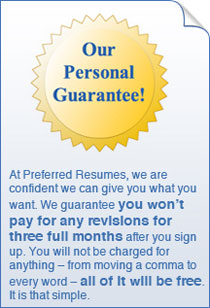Show that You've Been Moving Up, Not Across or Down
|
|
The most recent position on your resume should carry the most weight in terms of space allotted, and your oldest position should carry the least. This shows a trend of upward mobility in your career. Before an employer even reads a word of your resume, he/she will get the sense that you have held increasingly responsible positions as you've made your way through the working world. If each of your job descriptions is the same length, it might give the impression that you've just moved laterally and haven't advanced. If an older job description has more meat than your recent description, it may seem as though you've taken a professional nosedive.
Even if you hate your most recent position and loved the one you had before, indicating this on your resume tells the person reading it that you've stalled in your career. An exception would be if your most recent position is temporary or short-lived, and your last position was significantly longer. In that situation, it's all right to shift the balance.
Another way to show how you have moved up through the ranks of a company is to not list each position individually, as you would jobs with separate companies. List your company name, location(s), and the entire time you were employed with them first, followed by your titles and the time you spent in each with their individual duties and accomplishments listed below each title. Not only does it make it very obvious that you spent considerable time with one employer (another bonus) and took on roles with increasing responsibility, it saves precious space and eliminates a lot of repetition.
Remember, first impressions are very important when it comes to your resume, so make sure you take advantage of visual tricks to make that impression as strong as it can be.




